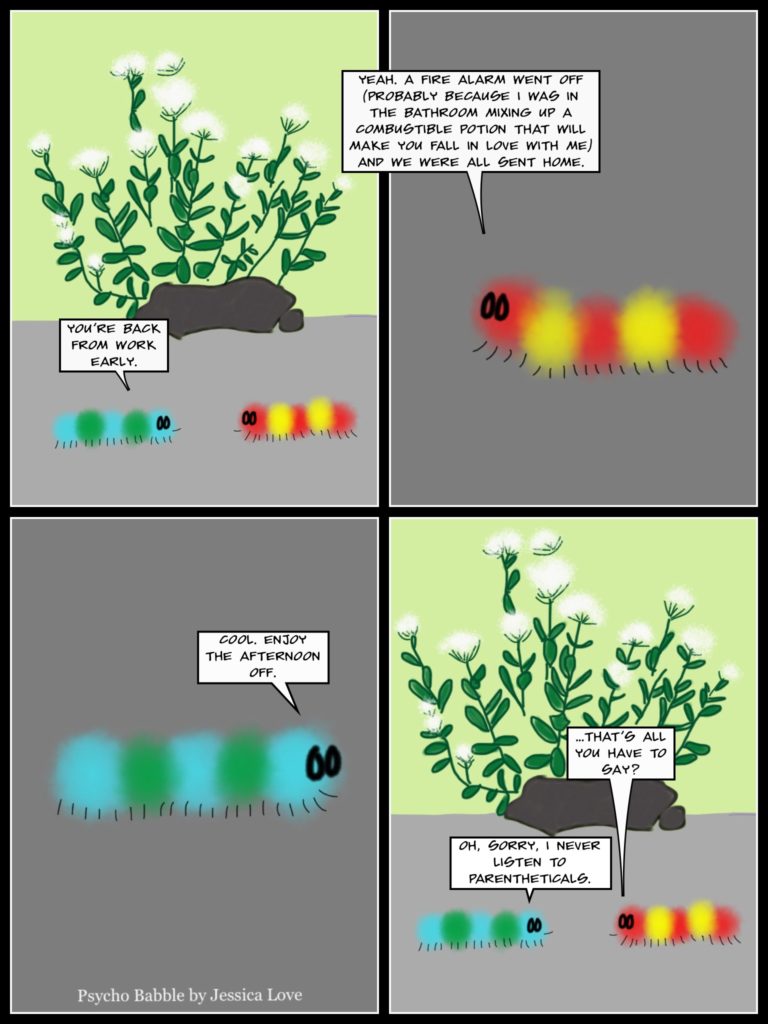
Parenthetical asides specify and over-specify. They explain and digress. Generally marked in print by dashes, commas, or actual parentheses (and in speech by lowering our pitch), parentheticals are the color commentators of our stories.
But how does our mind process these add-ons? Contrary to the above cartoon, we don’t ignore them. Indeed, we’re as likely to notice grammatical errors contained inside parentheticals as outside them. But a new study by researchers at the University of Massachusetts-Amherst argues that we don’t treat them as on par with the rest of the sentence either. Namely, we process these parentheticals as “quasi-independent speech acts”—perhaps even storing them separately in memory. The details on just how we do this are still fuzzy. But the upshot is that when new information is presented as a parenthetical, as opposed to as a part of the main sentence, it doesn’t contribute to the perceived complexity of the sentence. Consider the difference between The student met the art critic, the one who was in the art class Lucy teaches on Sunday and The student met the art critic who was in the art class Lucy teaches on Sunday. See? First one’s easier.

